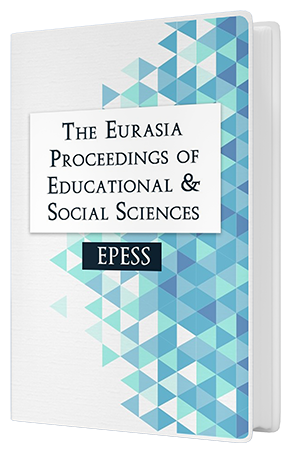Artificial Intelligence and Machine Learning in Governmental Artisanal Mining: Current Status, Development, and Future Directions
DOI:
https://doi.org/10.55549/epess.1413318Keywords:
Bibliometrics, Knowledge mapping, Text mining, VOSviewerAbstract
The COVID-19 pandemic is not an obstacle research and development implementation, one of which uses secondary data and bibliometric methods. Studies on mining regulation are generally about formal mining in the form of corporations, while artisanal mining is considered illegal, criminal, and its operation is prohibited because it inhibits the growth rate of a country’s socio-economic development. This study aims to analyse previous studies on governmental artisanal mining published in the Scopus database and data processing using VOSviewer software. The findings show that there are 287 documents on governmental artisanal mining published from 1987 to 2023. United Kingdom, Canada, and United States occupy most countries of publication as the place of author affiliation. Meanwhile, the author who produced the largest number of publications and is cited mostly was Galvin Hilson. The top ten publications based on the number of citations were obtained by the majority of journals ranked in Quartile 1 with the top rankings being Resource Policy Journal, Journal Cleaner Production, and Science of the Total Environment Journal. The dominant keywords used by authors were “artisanal and small-scale mining”, “formalization”, “illegal mining”, “Ghana”, and “gold”. The data revealed that there are still limited studies discussing the link between the governmentality of artisanal mining and local politics, other mining, and identity, as well as its relationship with the COVID-19 pandemic. Future studies can further develop the case of governmental artisanal mining from a social critical perspective and in comparison with other types of mining across countries.Downloads
Published
How to Cite
Issue
Section
License
Copyright (c) 2023 The Eurasia Proceedings of Educational and Social Sciences

This work is licensed under a Creative Commons Attribution-NonCommercial-ShareAlike 4.0 International License.
The articles may be used for research, teaching, and private study purposes. Any substantial or systematic reproduction, redistribution, reselling, loan, sub-licensing, systematic supply, or distribution in any form to anyone is expressly forbidden. Authors alone are responsible for the contents of their articles. The journal owns the copyright of the articles. The publisher shall not be liable for any loss, actions, claims, proceedings, demand, or costs or damages whatsoever or howsoever caused arising directly or indirectly in connection with or arising out of the use of the research material. All authors are requested to disclose any actual or potential conflict of interest including any financial, personal or other relationships with other people or organizations regarding the submitted work.




